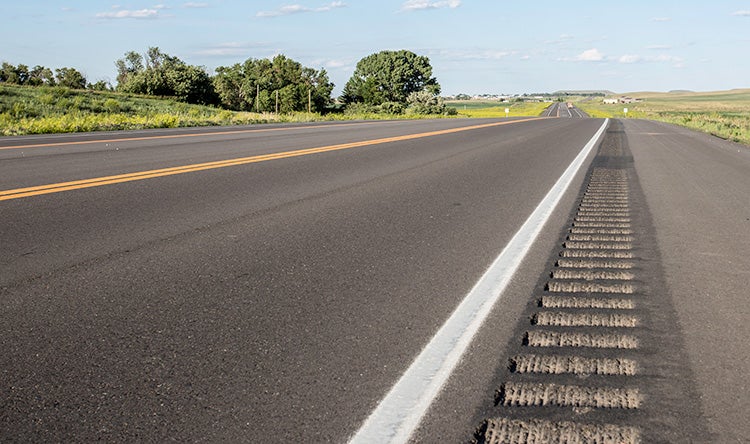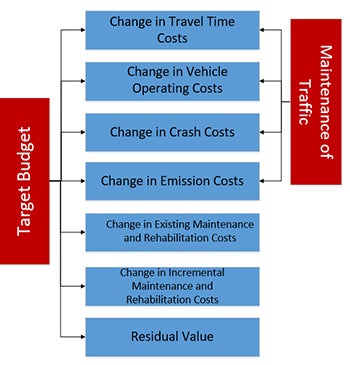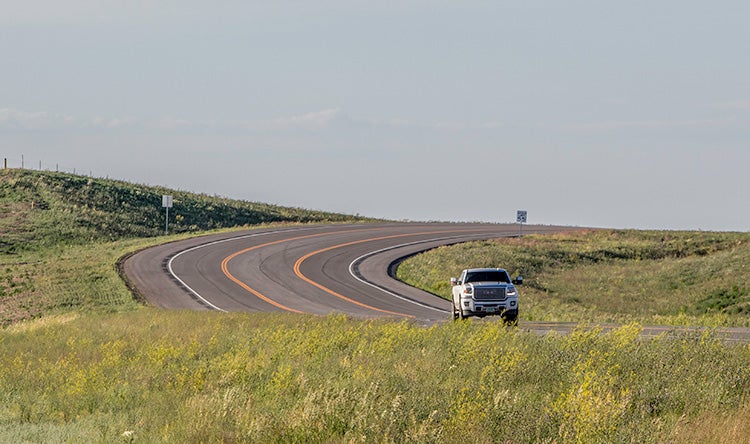
Experts Talk: Performance-Based Practical Design with Jon Markt
Experts Talk is an interview series with technical leaders from across our transportation program.
Project Development Approach Cost-Effectively Optimizes the Safety, Reliability and Operational Performance of Transportation Corridors
Each project has unique purpose and needs, whether congestion relief, safety, asset management or something else. Performance-based practical design, or PBPD, is an approach that recognizes every project is different and one that explores ways to help agencies find the most cost-effective solution to the specific challenges driving the project. Rather than offering a one-size-fits-all solution, the approach identifies targeted improvements that have the most impact on asset management, safety, congestion relief and overall system reliability.
Jon Markt, P.E., RSP1, a traffic engineer and transportation planner, has worked with several U.S. state Departments of Transportation to help develop their performance-based practical design approach. In this interview he shares how to seamlessly incorporate performance-based practical design into an agency’s approach as well as how to get the most out of it.
Q. What is PBPD?
A. PBPD is a flexible design process that focuses on a program’s needs and measurable performance. Performance here is defined as the tangible benefits to users and agency owners from proposed improvements to a corridor. PBPD is used to choose corridor improvements based on the most pressing need rather than applying a blanket or prescriptive standard. Using the PBPD approach encourages the development of projects that enhance existing corridors, with a focus on users’ needs.
Two corridors can have similar intended uses while operating very differently. The PBPD approach allows us to focus on specific issues, whether that’s crashes, delays or something else, and then define the most effective and efficient way to solve the problem. We can focus each project on the current corridor design and what could be added to that design to satisfy a need, like reducing crashes, reducing delay, or preventing pavement failure. This shift in approach is reflected in industry publications, like the 7th Edition AASHTO Green Book, that have pivoted from a focus on the satisfaction of standards to a focus on a flexible design process that emphasizes the expected performance.
Q. Why does it make sense to take a PBPD approach?
A. Agencies are responsible for providing a safe and efficient transportation system while carefully spending public dollars. As many U.S. states approved gas tax increases in the 2010s, agencies needed to renew a focus on accountable spending. PBPD balances user needs effectively with agency resources, optimizing the user benefits provided across the agency.
PBPD achieves that balance by separating wants from needs, like any sound budget. A PBPD will focus on defined corridor needs, providing an ultimate project design that is user-centric. Once focused on user needs, PBPD analysis tools help designers to selectively design improvements that fit the need and budget. Like practical design, the PBPD approach is budget-conscious. But PBPD differs in that it makes a stronger case for agency investment in corridors with true performance deficiencies.

For example, take a corridor with numerous crashes. A traditional design approach would suggest that an agency should bring the corridor up to full design standards. Using a performance-based practical design approach, the agency might find that a more targeted, cost-effective improvement addresses the core safety issues — for example, restriping or adding rumble strips rather than widening a road.
Q. What is the process for determining the best improvements?
A. A PBPD analysis compares the benefits of improvements to the proposed project cost. Agencies are familiar with this type of engineering benefit-cost analysis, but they might use inconsistent methods for developing project benefits that lead to unproductive decision making. Our work with multiple states led to the use of the target budget as a consistent framework suited to the workflows of designers.

The target budget allows design staff to input the data they already have, such as road specifications. It combines those details with safety performance measures (e.g. crashes prevented), traffic operations performance measures (e.g. delay reduced, fuel saved), and agency savings (e.g. reduced maintenance costs) to develop a suite of project benefits that is directly comparable to construction costs. Designers can use this target budget approach to clearly understand the user benefits provided by different design options to optimize the overall corridor design. This methodology provides an optimum use of agency resources by confirming the user benefits provided are in alignment with project costs.
Q. What kinds of projects benefit most from this approach?
A. PBPD is a broad and flexible approach, so most transportation agency projects will benefit from its sound engineering economics. One area that can be a prime target for PBPD is rural corridor projects — we’ve found this while supporting the Iowa, Kansas, Nebraska and Colorado DOTs. States own and maintain a tremendous amount of rural roadway, and these roadways serve as a lifeline to and between communities. In these corridors, a first instinct might be to bring the corridor geometry up to the latest standards, but often these corridors operate safely and efficiently except for their physical deterioration.
PBPD helps separate rural corridor projects with a focus on asset preservation from those warranting new safety and operational improvements. Even when making needed safety improvements, PBPD show that cost-effective treatments like rumble strips and Safety Edge work as well as or better than more expensive options like widening shoulders and rebuilding fore-slopes.
The K99 corridor in Kansas is a good example. A stretch of this highway was experiencing a lot of run-off-road crashes. Knowing they needed to widen the shoulders, but unsure how far, they turned to PBPD. We found that KDOT could increase safety by widening the shoulder by 3 feet, with funding that was already in the budget, then convert some of the planned shoulder width to lane width by restriping it.
Q. How do you start incorporating a PBPD approach into your process?
A. To make a shift toward PBPD, agencies need to expand their design toolbox. With some up-front investment, states like Kansas and Nebraska have decided to build PBPD tools with their designers in mind, automating the performance calculations. In the form of a spreadsheet, road designers can input the data they already have, and the tool will provide effective options for roadway improvements as well as potential costs. This provides a consistent application of roadway improvements in practice to help designers acclimate to PBPD. The staff in these states become comfortable with the new tool through good user design and instructional manuals, training, and access to experts during early adoption. We provide the roadway design, traffic engineering, planning, asset management and economic professionals to support development and adoption of these new PBPD tools and other steps toward adoption.

It’s important to equip this part of the transportation workforce to do this work, without requiring them to learn a new set of skills. Without these tools, PBPD would require detailed analysis from the agency safety or traffic engineer’s office and the need for projects can overwhelm the available support. With these tools, an agency can allocate their funding and staff more effectively and make the best decisions for stakeholders and constituents.
Inspiration & Advice
Q. How did you become involved in performance-based practical design?
A. I lost a close friend to a rollover crash as a kid. If I can make things just a fraction better for safety, I’m going to do it. This led me to become a road safety professional in a rural state. I had been applying safety principles at the planning scale for some time when a small, proof of concept project was developed for a state DOT to help them dip their toe into performance-based practical design. It was my first chance to work with helping an agency use emerging safety practices broadly through their program. That, along with my passion for safety, led me to where I am today.
Q. What advice do you have for someone who is interested in performance-based practical design and working in the field?
A. There is a lot of opportunity to develop improved tools and software, support new performance research and focus agency decision-making around new practices. If any of these excite you, volunteer to dig a little deeper. With emerging fields, one of the best ways to get involved is to plug into and contribute to a community of practice. Performance-based practical design is an area where substantial research dollars are being invested through numerous NCHRP projects, and keeping up to speed on the latest research is critical. Opportunity presents itself to those with a track record of past service.
Each Experts Talk interview illuminates a different aspect of transportation infrastructure planning, design and delivery. Check back regularly to gain insights from specialized experts and thought leaders behind our award-winning, full service consulting practice.


